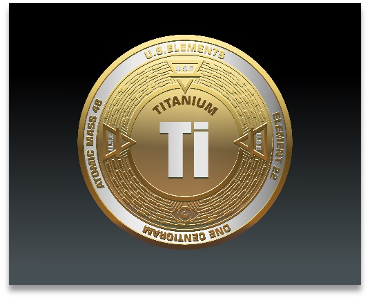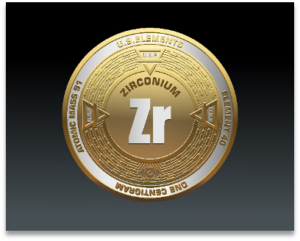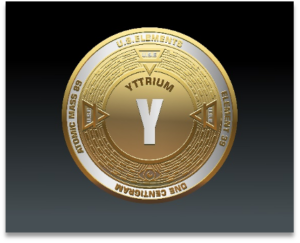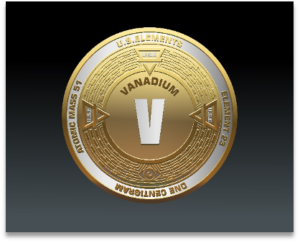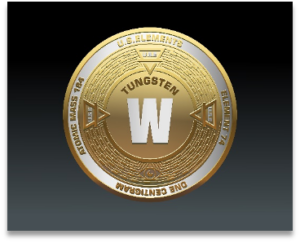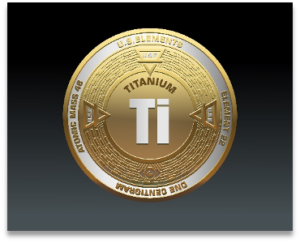Titanium is often called the “space-age metal” due to its remarkable combination of strength, low density, and corrosion resistance. In fact, it has the highest strength-to-weight ratio of any metal, making it indispensable for aerospace, military, and medical applications. As we continue our Critical Minerals Series, this forty-ninth installment explores titanium’s vital role in America’s technological advancement and industrial security.
Why the U.S. Needs Titanium
Titanium is a cornerstone of modern defense and aerospace industries. Its superior properties make it ideal for aircraft structures, jet engines, and armor plating. Additionally, titanium is widely used in clean energy technology, medical implants, and industrial manufacturing. Without a stable titanium supply, the U.S. risks losing ground in key sectors, from national security to advanced healthcare.
Where It’s Found Domestically
Although titanium is the ninth most abundant element in the Earth’s crust, the U.S. relies heavily on imports. Domestic sources include mineral sands in states like Florida and Georgia, as well as titanium-bearing ores found in California and New York. However, significant investments are needed to expand domestic extraction and refining capabilities.
Economic Realities
Titanium’s high market value stems from its difficult extraction and processing requirements. The global titanium market is shaped by aerospace demand, with key suppliers including China, Russia, and Japan. Given geopolitical uncertainties, ensuring a robust domestic supply chain is crucial to maintaining economic stability and reducing import dependency.
Processing and Technological Innovations
Traditional titanium extraction via the Kroll process is energy-intensive and costly. Emerging technologies, such as the FFC Cambridge process, promise to streamline production by reducing energy use and increasing yield. Advances in recycling titanium from industrial waste and end-of-life products are also gaining traction as a sustainable alternative.
Abundance and Waste Recovery Potential
Titanium occurs naturally in minerals such as ilmenite and rutile, which are processed to extract pure metal. It is also recoverable from industrial waste, including spent catalysts and aircraft scrap. Enhancing recycling infrastructure could reduce dependence on virgin ore and lower environmental impacts.
Time to Market
Titanium mining and refining can take years to establish, with production cycles influenced by demand from defense and commercial sectors. Developing a fully domestic titanium supply chain requires long-term investment and policy support to fast-track resource development.
Current and Future Applications
Beyond aerospace and defense, titanium is revolutionizing medical technology, with biocompatible implants such as joint replacements and dental implants. It is also crucial in energy infrastructure, including wind turbines and nuclear reactors. Future breakthroughs in 3D printing and nanotechnology could further expand its applications.
Impact on Everyday Life
From smartphones to sports equipment, titanium enhances daily life in ways most people don’t realize. Its strength and lightweight nature improve the performance of consumer goods, including bicycles, golf clubs, and high-end electronics.
Consequences of Supply Shortages
A titanium supply crisis could severely impact defense readiness, aircraft manufacturing, and medical device production. Given its critical role, any disruption in supply chains could have significant national security and economic ramifications.
Import Dependence
The U.S. currently imports over 90% of its titanium, with key suppliers including China and Russia. This dependency presents a strategic vulnerability, emphasizing the urgency of bolstering domestic production and exploring alternative sources.
Conclusion: Strengthening America’s Titanium Supply Chain
Titanium is an irreplaceable element in modern industry and defense. The U.S. must prioritize domestic mining, refining, and recycling initiatives to secure a stable supply. By investing in innovative processing technologies and expanding domestic resources, America can reduce its reliance on foreign sources and strengthen its position as a global leader in titanium production.
The road to mineral independence continues. Stay tuned for the final installment of our Critical Minerals Series, where we explore the fiftieth and final element vital to America’s future.

